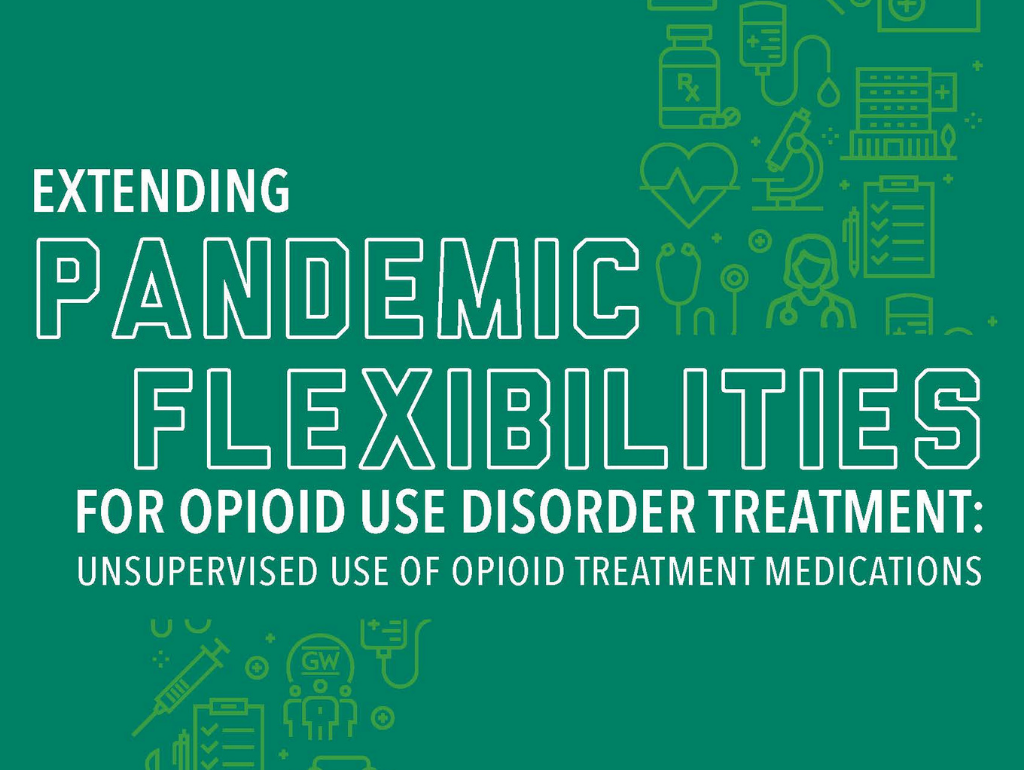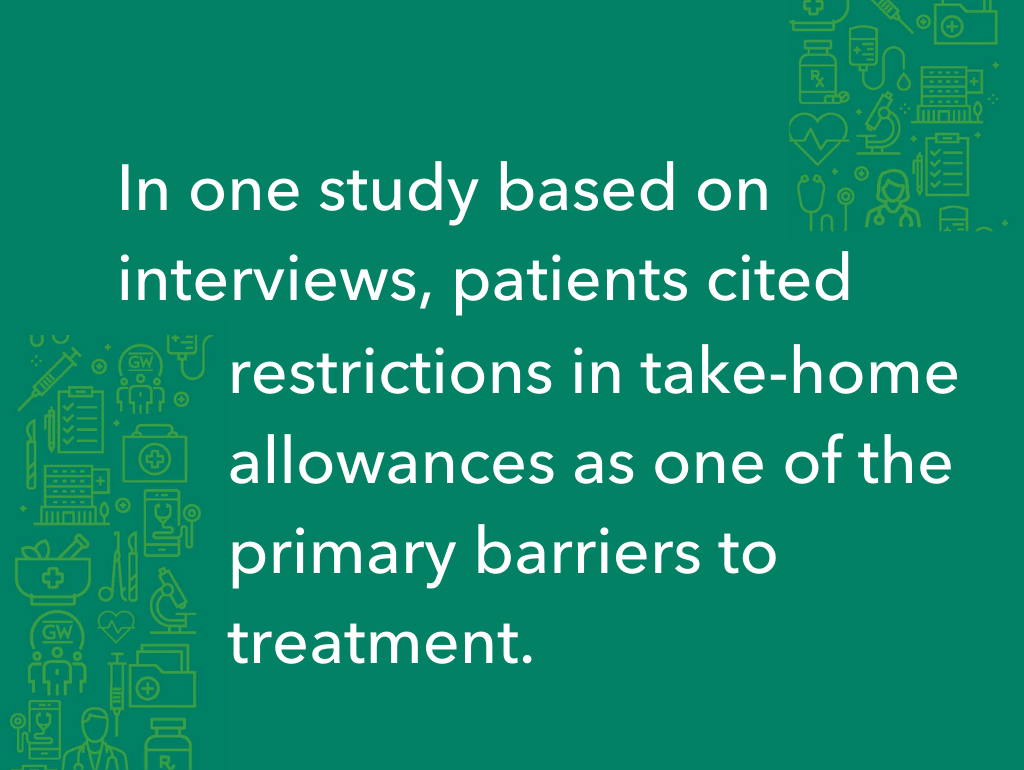Extending Pandemic Flexibilities for Opioid Use Disorder Treatment
This is the second report in a project supported by The Pew Charitable Trusts. Our first report was published in February, and both are available on our project landing page along with related content.
Executive Summary
Methadone, a medication used to treat opioid use disorder, can only be dispensed to patients at federally regulated opioid treatment programs. This restriction grew out of concerns about diversion and overdose. Many patients must wait in line each day at an opioid treatment program to receive their dose of methadone because they are not permitted to take additional doses home. Buprenorphine, a medication also used to treat opioid use disorder, is more leniently regulated and can be prescribed to patients by practitioners outside of opioid treatment programs, but it is also occasionally dispensed directly to patients at opioid treatment programs. Although it is easier for practitioners at opioid treatment programs to dispense a take-home supply of buprenorphine than methadone, patients still face considerable barriers to obtaining a take-home supply. Public health advocates have long argued that these barriers should be reduced or removed, but these rules have remained in place for decades. In response to the COVID-19 public health emergency declaration and to promote social distancing, however, federal regulators made it easier for patients to receive take-home supplies of methadone and buprenorphine.
Practitioners and public health experts are concerned that, after the pandemic-related public health emergency expires, this new flexibility will also expire and erode this promising new expansion of access to treatment. This report provides an independent assessment of whether the Substance Abuse and Mental Health Services Agency (SAMHSA) has the legal authority to extend the flexibility after the COVID-19 public health emergency ends.
This report concludes that SAMHSA has the legal authority to extend the flexibility it granted during the COVID-19 public health emergency without additional authorization from Congress. SAMHSA could use its statutory authority to issue a rule making codifying this change. Alternatively, SAMHSA could release a guidance document implementing this change, consistent with how it issued guidance for the pandemic. Finally, SAMHSA could use the opioid-specifc public health emergency declaration to extend these flexibilities for a longer period.
View Related Content: Extending Pandemic Flexibilities for Opioid Use Disorder Treatment
View more content from The PEW Charitable Trusts
400,000
Over 400,000 people in the United States receive methadone from an opioid treatment program.
90%
Over 90% of opioid treatment programs are located in urban areas, making it challenging for rural patients to make the daily trip to receive their medication.
Primary Barrier
In one study based on interviews, patients cited restrictions in take-home allowances as one of the primary barriers to treatment.






